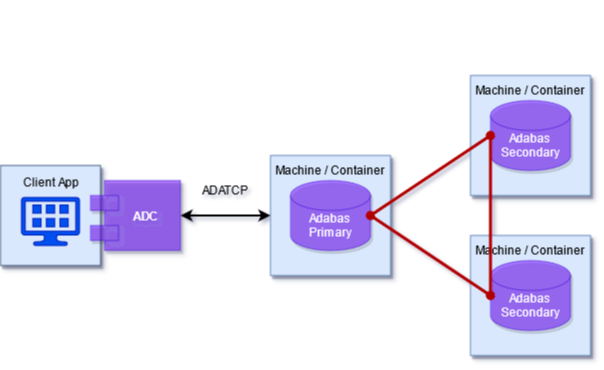The Primary Node is the only component that accepts update commands. By default, the first node to be started becomes the Primary of that cluster, also called a bootstrap node. The primary node shares a Cluster Unique Identifier with all other nodes. It is possible to switch to another node (status SYNCED) as Primary Node. For more information, see
CLUSTER_PRIMARY: Trigger Primary Node Switch.
All other nodes take over the role of a Secondary Node. Write sets are devised solely from the Primary Node. A Secondary Node is only allowed to handle read commands, and update commands are rejected, returning Adabase Response Code 22. For more information see
Cluster-Specific Adabas response and subcodes.
It is advised to have at least two secondary nodes in your cluster. For more information see
Setting Up a Three-Node Cluster.
